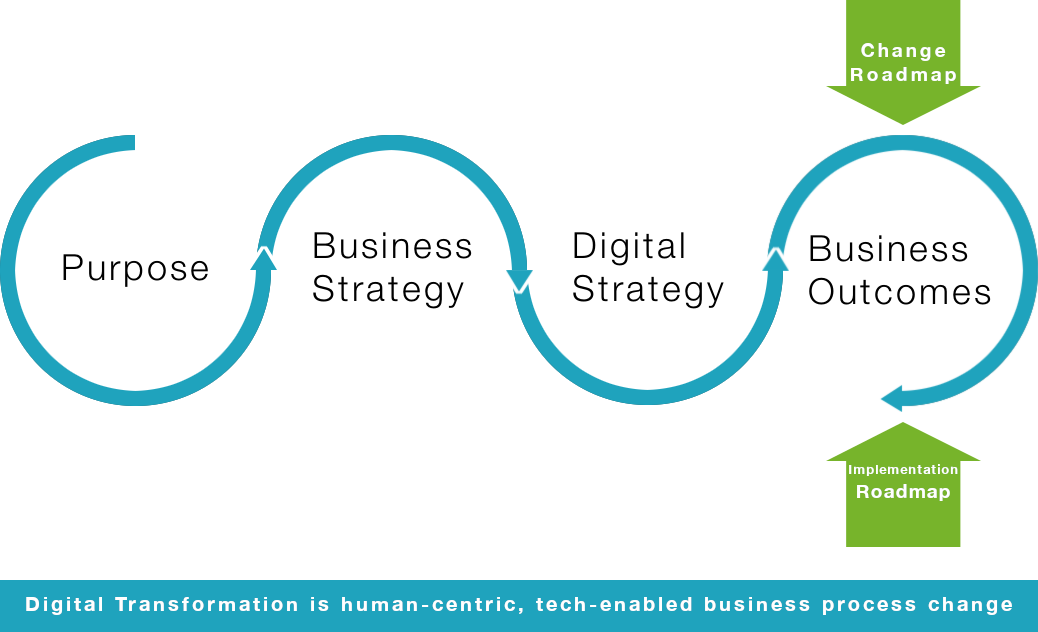Why Should you Digitally Transform?
Every organisation wants to do more with less while simultaneously increasing the level of service that they deliver to their customers. Given this, seemingly impossible task, winning and losing will almost certainly be determined by an organisation’s ability to leverage technology to improve the way that they work.
Digital Transformation is more than just investing in technology, in fact, research suggests that 70% of Digital Transformations fail to meet their objectives, so the question becomes – what can be done to maximise your chances of success?
Tip 1: Align Digital Transformation with your Strategy
Using an ever-increasing amount of technology isn’t necessarily going to solve your problems. In fact, excessive, unnecessary use of technology can have the opposite effect leaving people confused as to how work should be done while creating an unnecessary IT management overhead. Technology shouldn’t be used for the sake of using technology, there has to be a strategic reason.

The key is to create a Digital Strategy relating to your existing Business Strategy which, in turn, needs to be formulated in support of achieving your organisation’s purpose.
Every Digital transformation that you make must have a clear line of sight of your ability to achieve your overarching purpose.
Tip 2: Prioritise, Prioritise, Prioritise
You will almost certainly have more ideas of opportunities to digitise than resources to successfully implement these ideas, so rather than spreading yourself too thin you need to diligently prioritise your efforts.
This prioritisation needs to be driven by your Digital Strategy – every idea needs to be assessed against your strategy and only those which align should proceed.
Don’t let good ideas absorb resources that could be directed toward great ideas.
Tip 3: Consider all available solutions
Have you found a new tool that looks like it can solve all of your problems? Before you sign on the dotted line and jump into implementation you need to confirm the best path forward.
First and foremost you need to begin with process optimisation. If your underlying process has problems, then automating that process is only going to scale those problems up.
Once you have a stable process, the next step is requirements gathering where you define exactly what you need the system to do. You then need to survey the market and decide if an off-the-shelf product exists that is fit for purpose or if there’s a need for custom development.
Tip 4: Don’t forget to change
Too often Digital Transformation revolves around identifying and implementing the right technology. The reality is that the best technology in the world will only deliver value if people use it.

In order to deliver business outcomes, you need not only an implementation roadmap that outlines your technical implementation but also a change roadmap that ensures that you bring people along for the ride and make Digital Transformation a human-central, tech-enabled business process change.
Tip 5: Continuously Improve
At the end of a successful Digital Transformation initiative, there’s a temptation to pat yourself on the back and move on.
The Concorde Fallacy tells the story of how the British and French governments continued to fund the Concorde project for years after it became apparent there was no economic case to justify the money that had already been spent.
The Concorde Fallacy is ripe in Digital Transformation. Too often organisations are unwilling to replace their existing technology with new technology due to the money and time invested in the old solution.
The reality is, things change. Your requirements change. The state of the art changes. What was once the best solution may now no longer be fit for purpose. You need to be continually reviewing your ways of working and be ready and able to take it from the top.

